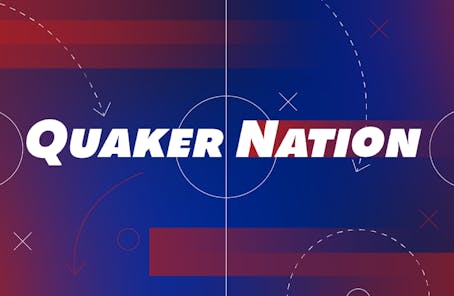"The Undergraduate Division has been informed by University net monitors that you are currently exhibiting Wharton graphics on your Internet home page. The use of these graphic images is copyrighted and restricted. You may not post these logos without specific permission." If you are a Wharton student exhibiting Wharton School or University logos on your individual World Wide Web site, beware. You may receive this e-mail soon. Wharton junior Kyle Schroeder, who copied and pasted Wharton logos onto his Web page, said he received the notice several weeks ago, informing him that he must remove the offending graphics from his site. Schroeder criticized Wharton's policy as "stupid" and "inane." He added that he "would understand if I was disrespecting them? but I wasn't." The e-mail said that "University net monitors" check sites periodically to ensure that the copyright laws protecting Wharton and University logos -- which are used to prevent misrepresentation -- are being followed. Wharton Publications Office Associate Director Thomas McMahon noted that "when students open accounts here they sign a form that says they will abide by the rules? and the school's logos are copyrighted." The school's policy states that the "Wharton School name and logo marks are legally registered trademarks of Wharton and the University of Pennsylvania and their use is restricted by University policy and U.S. trademark regulation." In addition to the regular Wharton name logo, other restricted Wharton insignias include the circle-W mark and the Wharton tag-line, which features a larger "Wharton School" script above a smaller "University of Pennsylvania." University logos that are copyrighted include the Arms of the University, the "PENN" mark, the legal Seal of the University and the "Split P" symbol. McMahon downplayed Wharton's aggressive policy, however, and admitted that the "net monitors" were actually "made up." McMahon said that, in truth, he only catches those people who are brought to his attention by students, faculty members or administrators. McMahon added that Wharton students learn "what they can and can't do" on the Internet in Operations and Information Management 101, a mandatory course for Wharton students that requires them to set up their own Web page. Current course instructors Steve Kimbrough and James Laing admitted, however, that such information is not covered in the syllabus. Laing also said that he was "not familiar" with the current copyright laws. Schroeder strongly criticized Wharton's policy of restricting student access to its logo, noting contradictions within the rules. He pointed out that any Wharton student can go to Wharton Reprographics to obtain personalized "academic cards" -- similar to business cards -- which they can distribute freely, though they feature the Wharton School logo. Randall Couch, Manager of Communications Design in Penn's Information Systems and Computing office, explained that the difference between academic cards and homepages is that the school can oversee production of the cards but not individual Web sites. By restricting use of the Wharton logo on homepages, Penn avoids "any implied endorsement by Penn of material it has no control over," according to Couch. The copyright restrictions that prevent Wharton students from using their school's or the University's logos on their homepages apply to all University students. A Wharton sophomore who asked to remain anonymous has displayed a University logo on his Web site since the end of March without being asked to remove it. Although he understood the University's copyright policy, he agreed with Schroeder that the rules were unnecessary. "The University should be proud of the fact that we're using [the logo]," the sophomore said. "It's advertising."
The Daily Pennsylvanian is an independent, student-run newspaper. Please consider making a donation to support the coverage that shapes the University. Your generosity ensures a future of strong journalism at Penn.
DonatePlease note All comments are eligible for publication in The Daily Pennsylvanian.




